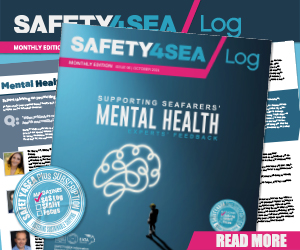The need for a common language onboard is considered essential for safe operation of a ship, at a time when the nature of seafaring itself means ships are manned with crew members from different parts of the world.
Many studies have attempted to investigate the impact of national culture on human failures at sea revealing that lack of a common language could make ship a high-risk work environment. Crews coming from various nationalities have different mother tongues, even body language and gestures, while different cultures may interpret things differently.
Meanwhile, communication is a complex concept of its own, involving emotional triggers and audiovisual perception, and barriers to its effectiveness vary from physical to physiological factors.
As such, even people who speak the same language sometimes misunderstand each other. However, consequences of misunderstandings may be fatal onboard vessels, especially in case of emergencies, when time is limited and people normally tend to revert to their mother tongue.
To address language differences, in 1983, linguists and shipping experts created Seaspeak, a system of communication setting the rules on how to talk on a vessel’s radio. The number of words that can be said is limited, and English was chosen as the principle lexicon. In 1988, IMO made Seaspeak the official language of the seas.
Unfortunately, there have still been examples of incidents where better language skills could have avoided accidents and, in some cases, could have saved lives:
- On passenger vessels, the ability to communicate with passengers in an emergency is fundamental for swift evacuation: Lack of a commonly understood language among crew was highlighted after 161 people lost their lives from fire on “Scandinavian Star” ferry in Skagerrak in 1990.
- During maneuvering, language differences in VHF may prove problematic: After collision of bulker Huayang Endeavour with tanker Seafrontier, investigators said the language in VHF conversation between the two vessels was not precise or simple, and, had the watchkeepers adopted SMCP under STCW, confusion risks would have dropped.
- Master-pilot collaboration depends on shared understanding: The container ship Cosco Busan hit the San Francisco Bay Bridge in November 2007, causing significant pollution and a major cause was lack of effective communication between American pilot and Chinese Captain. Also, most crew had limited knowledge of English and could not adequately understand SMS.
Selection by shipowners of a certain mix of seafarers onboard with compatible cultural backgrounds could be helpful, but not resolving. On their part, seafarers could dedicate time with their mates to develop mutual understanding, which can also partly address the issue.
Either way and while there is no recipe for addressing language barriers, open feedback can always serve as the golden rule of any communication; if you don’t understand, ask; if you think the others did not understand, ask for feedback, repeat, explain.
Did you know?
- Today, 80% of ship’s crews do not speak English as first language.
- Communications deficits account for up to 35% of ships’ accidents.
- Communication constitutes one of UK MCA’s ‘Deadly Dozen’ factors at sea.

































































